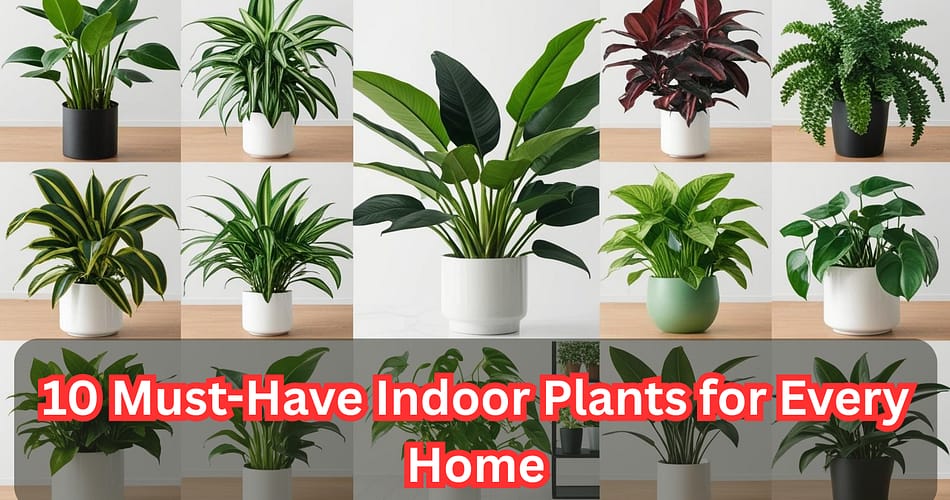Bringing indoor plants into your home is one of the easiest and most beautiful ways to add life, color, and clean air to your space. Whether you live in a tiny apartment or a big house, there’s always a perfect spot for a green buddy. Not only do plants make your home look lively and stylish, but they also help you breathe fresher air and feel calmer. Let’s dive into the best indoor plants that are easy to care for, even if you’re not a gardening expert.
Why Indoor Plants Are Essential for Every Home
Improve Air Quality Naturally
Did you know that having houseplants can actually clean the air inside your home? Plants like the Snake Plant and Peace Lily work like little air filters. They remove bad stuff like toxins and dust, making the air healthier to breathe. Scientists even say some plants can pull harmful chemicals out of the air. So, while they’re sitting there looking pretty, they’re also quietly working hard to make your home safer for you and your family.
Boost Mood and Reduce Stress
Imagine coming home after a long, tiring day and seeing a room full of fresh, green plants. Doesn’t that sound relaxing? Studies show that indoor plants help lower stress, anxiety, and even blood pressure. Just being around greenery can boost your mood and make you feel more peaceful. Some people even call it “plant therapy” because spending time with your plants is like taking a mini mental health break.
Add Beauty and Life to Your Space
No matter how beautifully you decorate your home, nothing beats the charm that indoor plants bring. A trailing Pothos or a bold Fiddle Leaf Fig can turn a boring corner into a stunning focal point. Plus, with so many different shapes, sizes, and colors to choose from, you can find a plant that matches your personal style perfectly.
1. Snake Plant (Sansevieria)
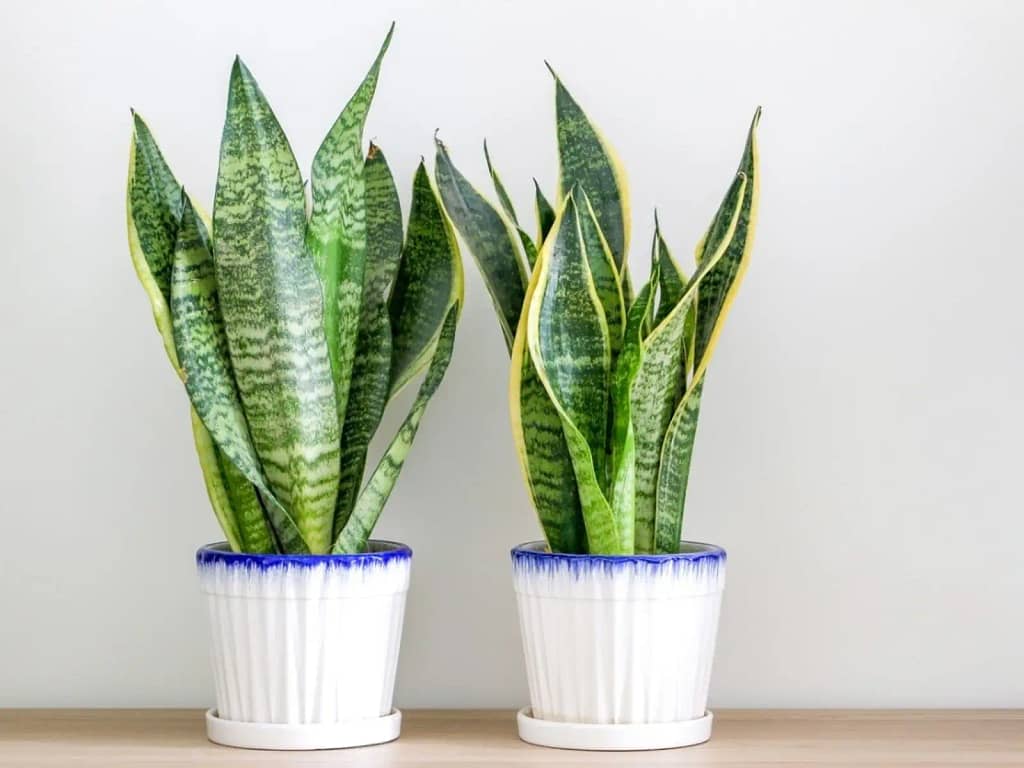
Why the Snake Plant is a Perfect Choice
The Snake Plant is often called the “mother-in-law’s tongue” because of its long, sharp leaves. It’s one of the best plants for beginners because it’s almost impossible to kill. This plant thrives even if you forget to water it for a week or two! It loves low light and can survive in places where other plants would struggle. Besides being tough, it’s also a superhero when it comes to cleaning the air. It removes toxins like formaldehyde and benzene, making your home healthier.
Another great thing about the Snake Plant is its stunning appearance. The tall, upright leaves with green stripes make it look modern and stylish. Whether you place it in your living room, bedroom, or even bathroom, it will add a touch of class without asking for much care.
Care Tips for Snake Plant
- Water only when the soil is completely dry.
- Keep it in indirect sunlight or even in low light.
- Use a well-draining potting mix to prevent root rot.
- Wipe the leaves with a damp cloth now and then to keep them dust-free.
- Avoid overwatering; it’s better to underwater than overwater this plant.
2. ZZ Plant (Zamioculcas zamiifolia)
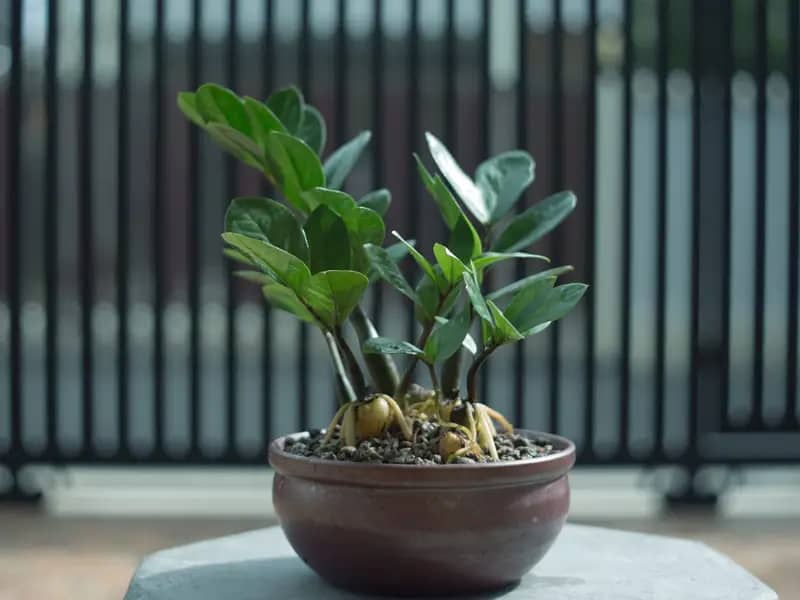
Benefits of Having a ZZ Plant
The ZZ Plant is like the ultimate survivor. Even if you completely forget about it for weeks, it will still look amazing. It has thick, waxy leaves that store water, so it doesn’t need frequent watering. The leaves are a deep green and super glossy, giving your space a rich, lush look. Plus, it’s another top plant for purifying indoor air.
If you’re someone who travels a lot, has a busy job, or just tends to forget about your plants, the ZZ Plant is perfect for you. It’s a true “set it and forget it” plant. It also does well in low light, so you don’t need a sunny window for it to thrive.
Simple Care Instructions for ZZ Plant
- Let the soil dry out completely between waterings.
- Place it in indirect light, but it can also survive in low light.
- Wipe leaves occasionally to keep them shiny.
- Use a pot with good drainage holes to avoid soggy soil.
3. Pothos (Epipremnum aureum)
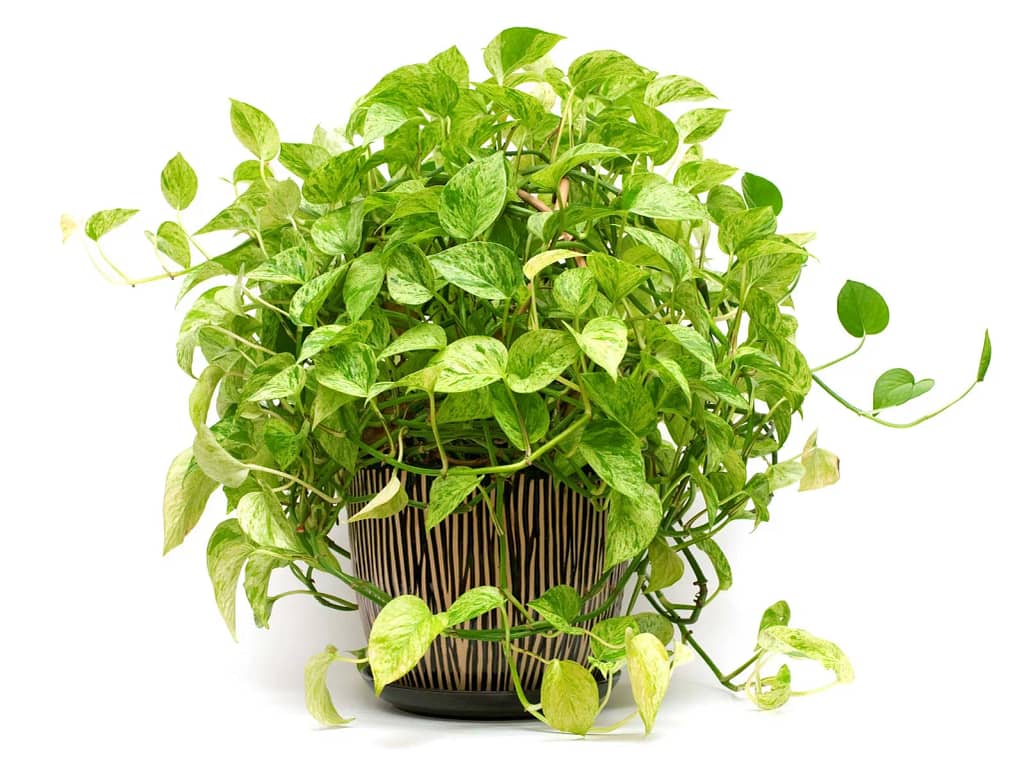
Why Pothos is Loved by Everyone
The Pothos plant is often called “Devil’s Ivy,” but don’t worry—it’s not evil at all! In fact, it’s one of the friendliest plants you can own. It grows fast, trails beautifully, and can survive in almost any lighting situation. Whether you hang it in a basket or let it climb a pole, the Pothos adds a lush, tropical feel to any room.
One of the coolest things about Pothos is how easy it is to share. Just snip off a vine, stick it in water, and watch new roots grow. It’s like getting free new plants for you or your friends!
Growing and Caring for Pothos
- Water when the top inch of soil feels dry.
- Bright, indirect light is best, but it can survive in low light too.
- Prune it often to keep it looking full and bushy.
- Fertilize once a month during the growing season (spring and summer).
- Watch out for yellow leaves—they usually mean too much water.
4. Spider Plant (Chlorophytum comosum)
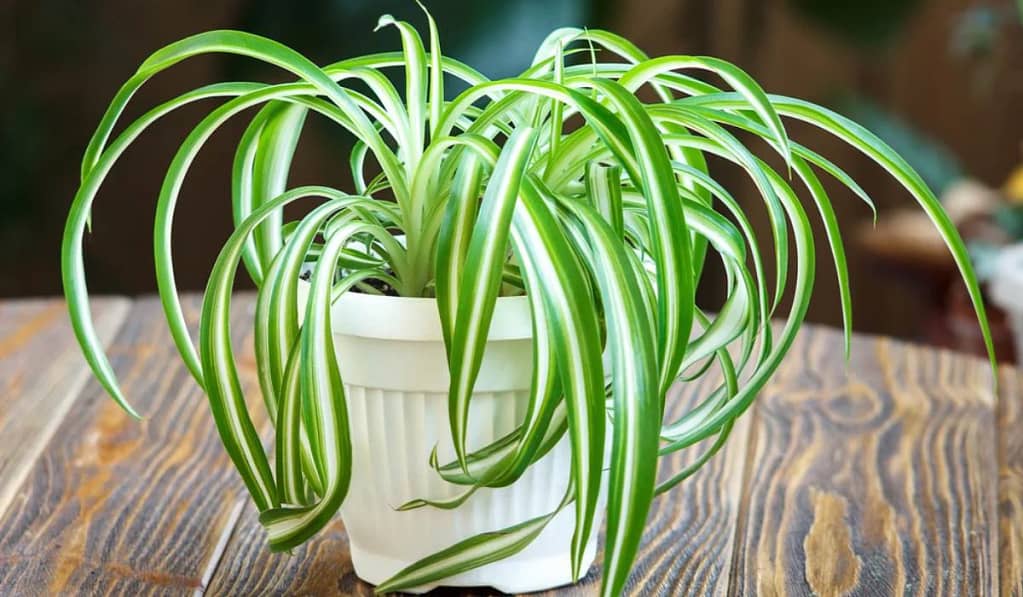
What Makes Spider Plant Special
The Spider Plant is a real crowd-pleaser. With its arching green and white striped leaves, it looks fresh and lively. It’s super safe for pets too, which is a big bonus if you have cats or dogs at home. Another cool thing? It makes “babies” or little offshoots that you can easily pot up and grow into new plants.
Spider Plants are also champions at cleaning indoor air. They are known to absorb carbon monoxide, formaldehyde, and other pollutants, making your home a healthier place to live.
Easy Care Guide for Spider Plant
- Keep soil lightly moist but not soggy.
- They love bright, indirect light but can adapt to shade.
- Trim brown tips to keep the plant looking fresh.
- Repot when the roots get crowded (you’ll notice them poking out).
- Mist occasionally if the air is very dry.
5. Fiddle Leaf Fig (Ficus lyrata)
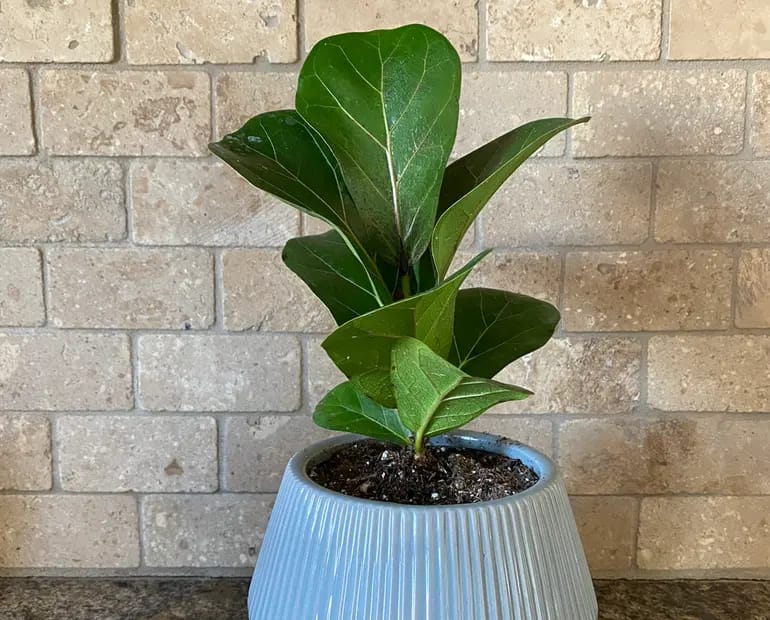
Why the Fiddle Leaf Fig is So Popular
If you’ve ever scrolled through Instagram home decor accounts, you’ve definitely seen the Fiddle Leaf Fig. With its huge, glossy leaves, it makes a big statement in any room. It’s the perfect plant if you want something bold and stylish. But be warned—this beauty needs a little more attention than some of the other plants we’ve talked about.
The Fiddle Leaf Fig likes bright, indirect sunlight and a regular watering schedule. If you give it what it needs, it will reward you with stunning, lush growth that will have all your friends asking, “Where did you get that plant?”
How to Care for Your Fiddle Leaf Fig
- Place near a bright window but avoid direct sun.
- Water when the top inch of soil feels dry.
- Rotate the pot every week for even growth.
- Keep it away from cold drafts and sudden temperature changes.
- Wipe the large leaves with a damp cloth to keep them dust-free.
6. Monstera Deliciosa (Swiss Cheese Plant)
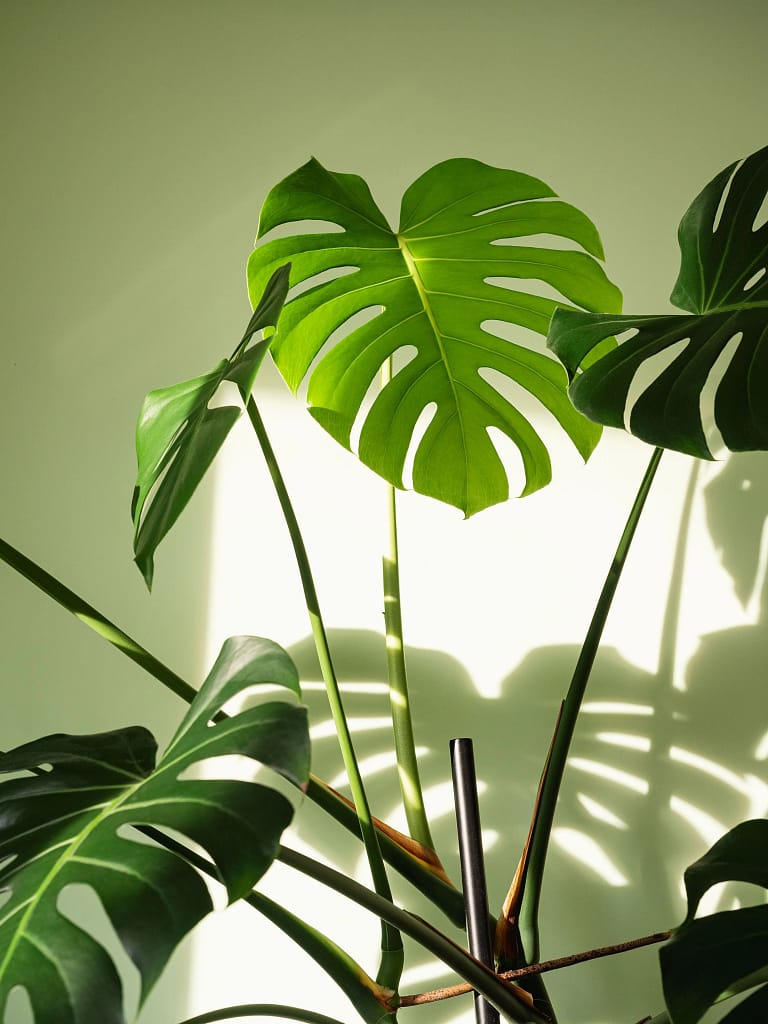
The Beauty of Monstera Deliciosa
The Monstera Deliciosa, also called the Swiss Cheese Plant, is a showstopper in any home. Its big, dramatic leaves are full of natural holes, giving it that famous “Swiss cheese” look. This plant instantly adds a wild, tropical vibe to any room. As it grows, it becomes a real statement piece, perfect for big spaces or cozy corners that need a touch of drama.
One amazing thing about the Monstera is that it adapts really well to indoor life. It doesn’t need full sun and can be pretty forgiving if you forget a watering or two. Plus, it grows fast and can get really tall if you give it something to climb on, like a moss pole. It’s like having a mini jungle right inside your home!
Simple Growing Tips for Monstera
- Bright, indirect light is ideal. A little morning sun is okay, but avoid harsh afternoon rays.
- Water when the top 2 inches of soil are dry.
- Use a well-draining soil mix to keep the roots happy.
- Clean the leaves gently to help the plant “breathe” better.
- Give it a support like a moss pole as it gets bigger.
7. Peace Lily (Spathiphyllum)
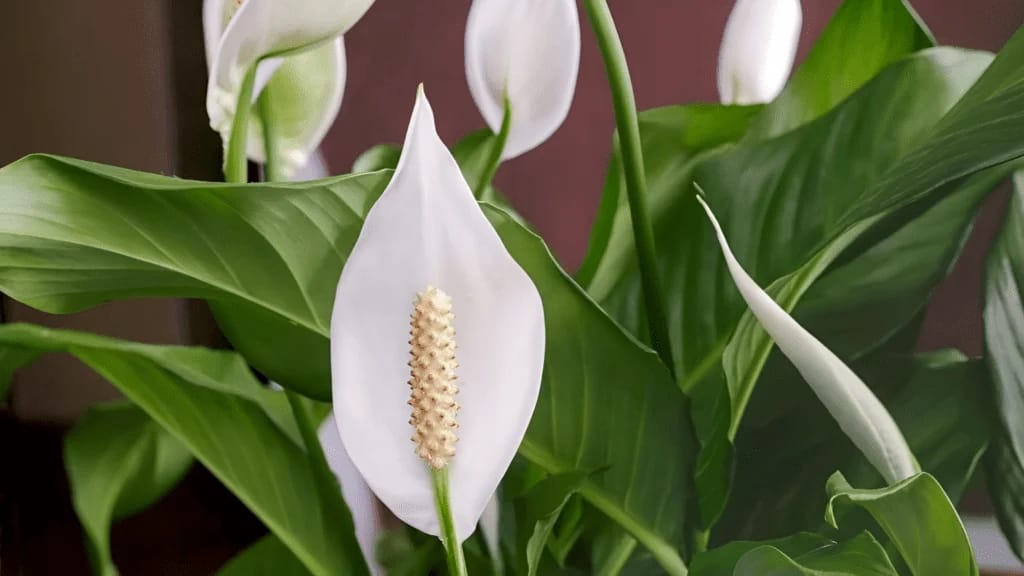
Why You’ll Love Having a Peace Lily
The Peace Lily is a true beauty. With its dark green leaves and pure white flowers, it brings elegance and calmness to any space. It’s also one of the top plants for improving indoor air quality, removing harmful gases from the air. If you want a plant that looks classy and helps you breathe easier, this is the one.
One thing to note: while the Peace Lily is stunning, it’s toxic if eaten, so be careful if you have curious pets or little kids around. Still, it’s one of the easiest flowering plants to grow indoors. It even tells you when it needs water by drooping its leaves — very helpful!
Keeping Your Peace Lily Healthy
- Water when the leaves start to droop or the top inch of soil feels dry.
- Place in low to bright indirect light. Avoid direct sunlight.
- Wipe leaves regularly to prevent dust build-up.
- Mist the plant occasionally to keep humidity high.
- Fertilize once a month during the growing season (spring and summer).
8. Rubber Plant (Ficus elastica)
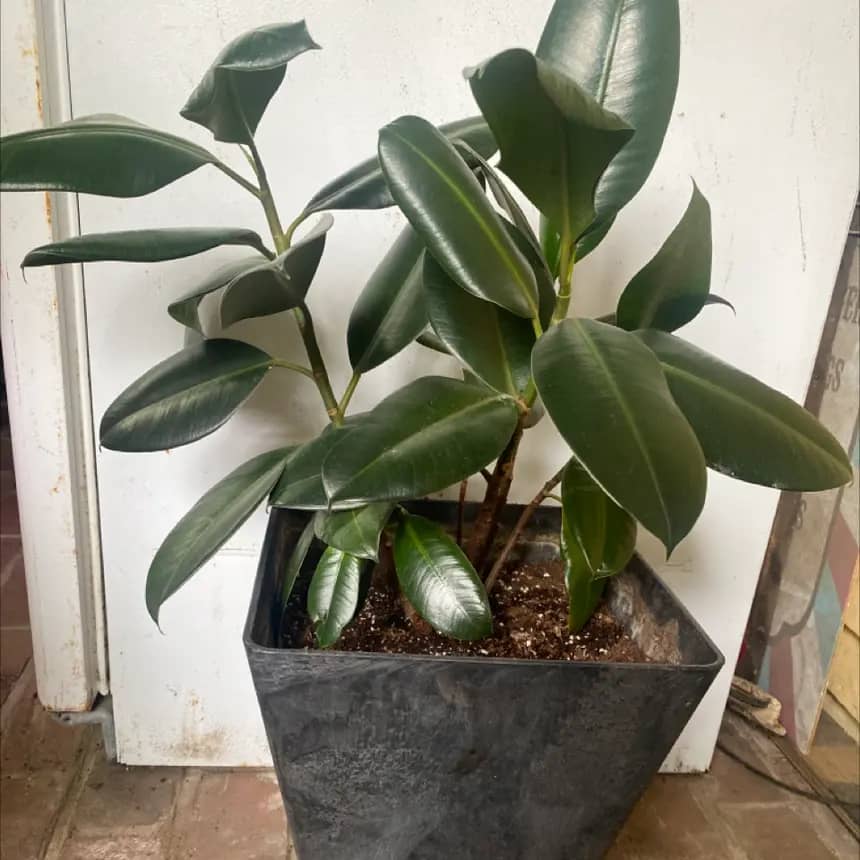
Why Rubber Plants Are a Top Pick
If you’re looking for a plant with big, bold leaves but don’t want the fuss of a Fiddle Leaf Fig, the Rubber Plant is a perfect choice. It has thick, shiny leaves that can be dark green, burgundy, or even variegated with splashes of color. It’s sturdy, stylish, and a little easier to care for compared to some other popular indoor plants.
The Rubber Plant also helps clean indoor air and can grow into a beautiful tree over time if you treat it well. It doesn’t need constant attention and can adapt to different environments, making it a top pick for plant lovers of all levels.
How to Care for Your Rubber Plant
- Keep the soil slightly moist but not soggy.
- Bright, indirect light works best; too little light can cause leaf drop.
- Dust the leaves with a damp cloth to keep them looking their best.
- Repot when roots start poking out of the pot.
- Trim occasionally to control size and shape.
9. String of Pearls (Senecio rowleyanus)
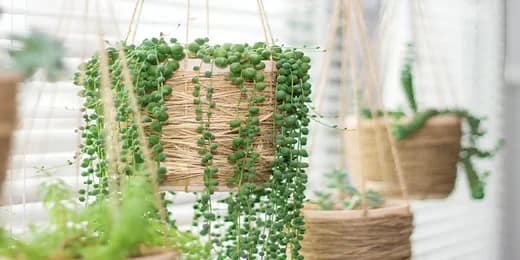
The Unique Beauty of String of Pearls
The String of Pearls is one of the most unique and charming plants you can add to your home. Its tiny, bead-like leaves trail down from the pot, creating a stunning waterfall of greenery. It’s technically a succulent, which means it stores water in its “pearls” and doesn’t need frequent watering.
This plant is perfect for hanging baskets or high shelves where its delicate strands can cascade freely. It’s a conversation starter for sure! Plus, if you’re into quirky, eye-catching plants, the String of Pearls is a must-have.
Tips to Keep String of Pearls Thriving
- Bright, indirect light is best; too much direct sun can burn the leaves.
- Water deeply but infrequently. Let the soil dry out completely between waterings.
- Use a cactus or succulent soil mix for proper drainage.
- Handle the strands gently; they are delicate and can break easily.
- Fertilize lightly during the growing season.
10. Aloe Vera
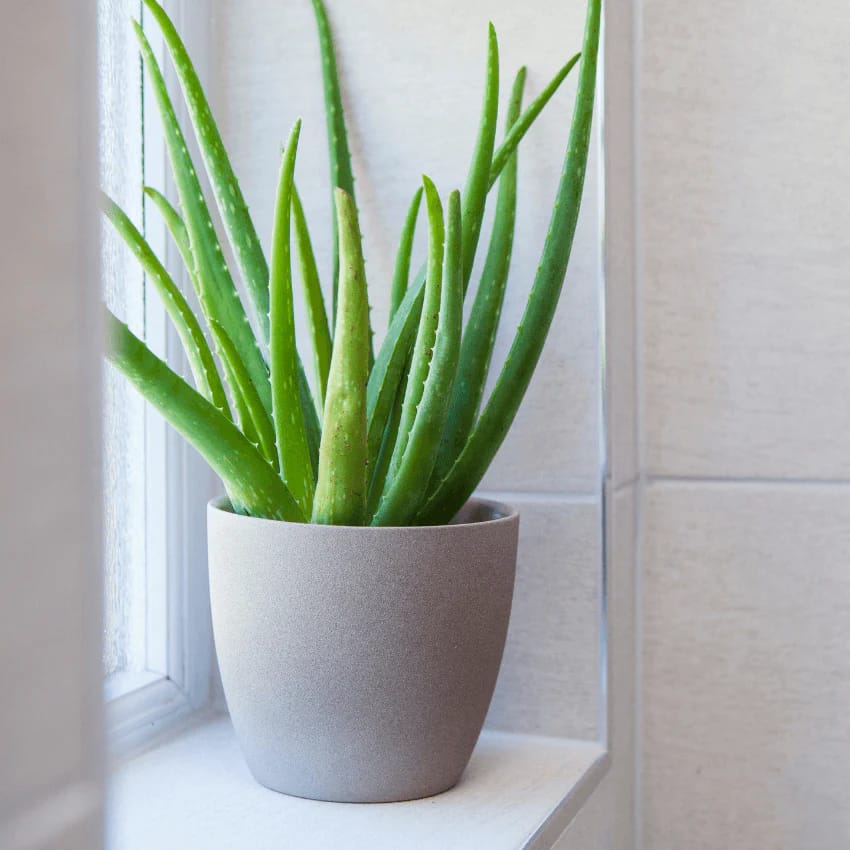
Aloe Vera: Beauty and Healing Combined
Aloe Vera isn’t just a pretty plant — it’s also a mini medicine cabinet! The gel inside its thick leaves is famous for healing burns, soothing skin, and even treating small cuts. Having an Aloe Vera plant at home means you’ll always have some natural first aid on hand.
It’s also super easy to care for. Like most succulents, Aloe Vera loves sunny spots and doesn’t need much water. Plus, it’s beautiful with its spiky, green leaves and compact growth. This plant is ideal for kitchens, bathrooms, or any bright windowsill.
Easy Care Tips for Aloe Vera
- Place in a bright, sunny window where it gets plenty of light.
- Water only when the soil is completely dry — about once every two to three weeks.
- Use a cactus mix or well-draining soil.
- Be careful not to let water sit in the center of the plant; it can cause rot.
- Cut older leaves first if you need the gel.
Final Tips for Indoor Plant Success
Light, Water, and Patience
If there’s one golden rule for growing indoor plants, it’s this: every plant is different. Some love the sun; others thrive in the shade. Some need frequent watering, while others prefer to stay dry. The best thing you can do is observe your plant and adjust your care accordingly. Always check the soil before watering — if it’s dry an inch or two down, it’s time to water. If not, wait a few more days.
Plants also need time to adjust to new environments. Don’t panic if a few leaves turn yellow or drop off after you bring them home. Give them some love, the right conditions, and most importantly, patience. In return, they will reward you with beauty, cleaner air, and a sense of peace.
Dealing with Common Plant Problems
Even with the best care, sometimes problems pop up. Yellow leaves? It could be too much water. Brown tips? Maybe the air is too dry. Drooping leaves? Check if the soil is too dry or too wet. Don’t worry — most plant issues are fixable once you know what’s wrong.
Here’s a quick cheat sheet:
- Yellow Leaves: Overwatering or poor drainage.
- Brown Tips: Dry air or low humidity.
- Drooping Leaves: Underwatering or root problems.
FAQs
Which indoor plant is the easiest to care for?
The ZZ Plant and Snake Plant are the easiest to care for. They need very little water, can survive in low light, and are almost impossible to kill.
Are there indoor plants safe for pets?
Yes! The Spider Plant is non-toxic to cats and dogs. Always double-check before bringing a new plant home if you have pets.
How often should I water my indoor plants?
It depends on the plant. A general rule: water when the top inch or two of soil feels dry. Succulents like Aloe Vera need watering less often.
Can I keep indoor plants in a windowless room?
Yes, but you’ll need low-light plants like the ZZ Plant or Snake Plant. You can also add a grow light to help them thrive.
What are the best pots for indoor plants?
Use pots with drainage holes to prevent root rot. Terra cotta pots are great because they let the soil dry out faster.

